What is the distance to plant cucumbers in the greenhouse and greenhouse?
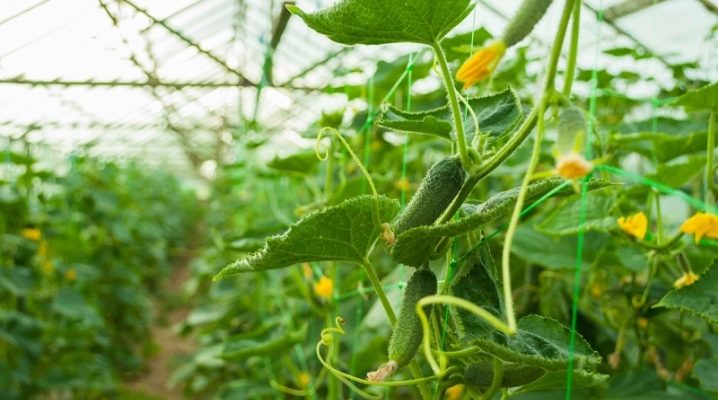
The harvest of any crop depends on adherence to the correct planting scheme. Cucumbers are no exception in this regard. Since this plant is southern, in the harsh conditions of the middle zone and northern regions, summer residents prefer to grow them in hotbeds and greenhouses.
Therefore, today we will talk about the best distance to plant cucumbers in greenhouses and about the most optimal planting methods that contribute to a bountiful harvest.
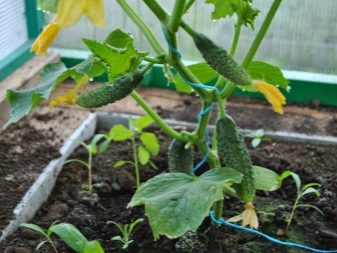

Standard one-liner landing option
It is best to plant cucumbers in a greenhouse or in a greenhouse in a seedling way, since planting with seeds implies later shoots... Seedlings allow you to harvest the first crop in the greenhouse at the end of spring, even in the central regions of the country. It is convenient to germinate seeds for seedlings in peat pots, which can be planted directly into the ground. So delicate cucumber roots will not be damaged when picking.
With the standard one-line planting method, the cucumber sprouts must be placed in one row. In this case, the distance between plants should be 15-20 cm, and between adjacent rows - 90-100 cm.For self-pollinated hybrids, the planting density can be slightly thickened by reducing the row spacing to 70 cm.
Planting in one line is most optimal for not too large glass and film greenhouses.
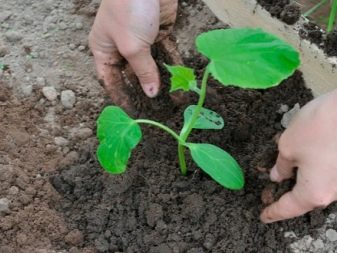
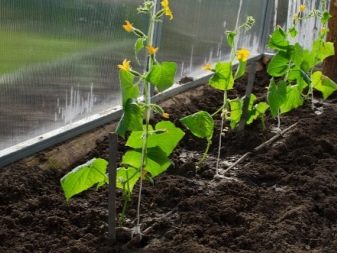
Two-line method
The double-line tape method implies that in one tape (line) there are two rows of landings located parallel to each other. When planting cucumbers in this way, use the following spacing scheme:
- the distance between plants in one row is 40-45 cm;
- the distance between the rows is 50-60 cm;
- between ribbons - 80-90 cm.
Spacious row spacings simplify watering, weeding and other cucumber care, and double lines save space in greenhouses and create the necessary "tropical" microclimate that this crop requires. To protect crops from weeds, the soil in the greenhouse must be covered with paper, film or agrofibre. To do this, the selected material is cut into wide (50-60 cm) strips and round windows are made in them so that the planted plants are located in the center of the holes. Then the paper (film, agrofibre) is sprinkled with a layer of earth.
The two-line method is ideal for creeping small-fruited fruits and hybrids that do not require removal of stepchildren.
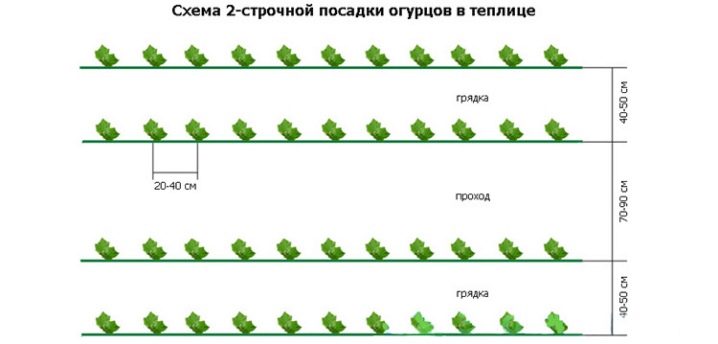
Other methods of disembarkation
It is most convenient to grow cucumbers in a polycarbonate greenhouse with a size of 3x6 or 3x4 m. In such a "house" it is easy to maintain an optimal temperature regime, monitor ventilation and soil moisture. To save space, it is important to correctly arrange the planting of cucumbers in the greenhouse. In addition to the two methods described above, the checkerboard method of planting has proven to be excellent.
Chess
With a checkerboard or, as it is also called, a square-nested planting scheme, the seedlings are distributed on the garden bed in a checkerboard pattern in two rows. At the same time, the beds are made 80-85 cm wide and at least 20 cm high. The distance between the rows should be 40-50 cm, as well as the distance between the bushes. Thus, every four adjacent plants form a square. This method of placing cucumbers in the greenhouse provides the bushes with ample light while saving space. In addition, it is very convenient to feed the plants with fertilizers.
To fertilize cucumbers during staggered planting, manure or compost, ash must be placed in the center of each sowing hole, and the fertilizer must be thoroughly mixed with the ground. Manure is also placed in the center of each square between the four holes. In this case, you do not need to mix it with soil. Now all that remains is to regularly water the plantings. At first, the cucumbers will feed on fertilizer in the holes, and when their roots grow beyond the limits of the holes, they will begin to consume the nutrients embedded between the holes. With this method, you do not need to feed the plants too often, which significantly saves the time and effort of the summer resident - the cucumbers will be provided with nutrients for the entire season.
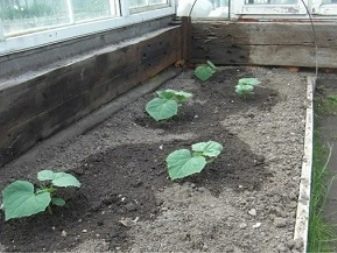
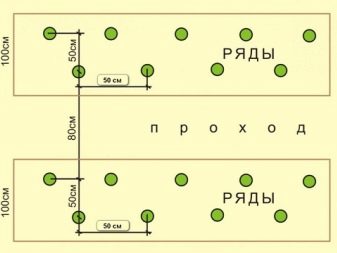
Pyramid
Round beds are perfect for small greenhouses. In order to form it, it is necessary to make a hill of soil 25-30 cm high, stick a pole into its center and from this pole stretch the support cords along the entire diameter of the bed. Seedlings are planted in a circle at intervals of 15 cm. As they grow, the stems will crawl upward, clinging to the cords, and form a green cone, similar to a pyramid.
It is very convenient to harvest from such a bed, since access to the bushes is provided from all sides.

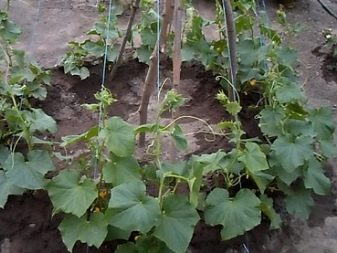
V-shaped
Seedlings are planted in holes of two bushes. Support cords are fixed on a horizontal bar at a height of 1-1.5 m and pulled to the holes in the form of the Latin letter V... Just like the pyramid method, this method is suitable for small greenhouses and greenhouses. The following two planting methods are used to germinate seeds directly in the soil.
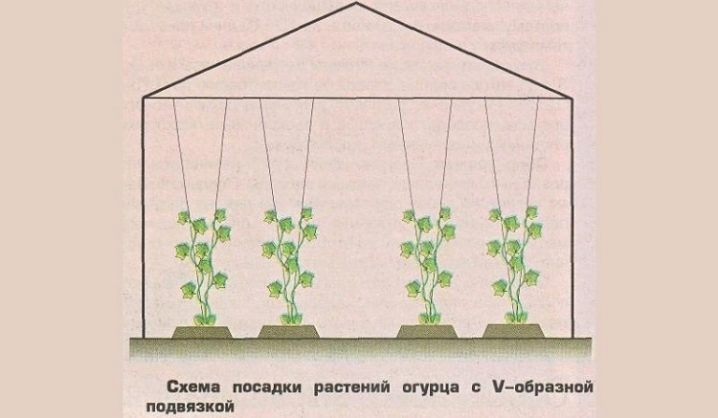
Horizontal
Pits are made in the garden at intervals of 40 cm and moistened abundantly with water. 3-4 seeds are placed in each hole to a depth of about 4-5 cm.The distance between the seeds in the hole is 5-10 cm... Bushes are formed in spread, that is, without tying.
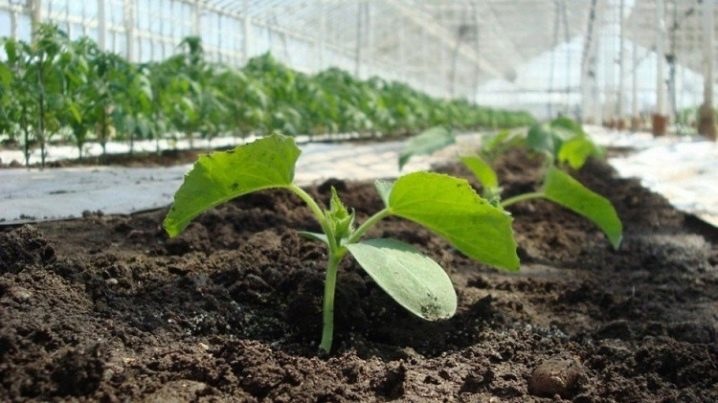
Vertical
With the vertical method, not holes are dug in the garden bed, but grooves at a distance of half a meter from each other. Seeds are planted at intervals of 15-20 cm to a depth of 2-4 cm. With this method, the bushes are tied up on trellises or on a net. Using the vertical method, you can form a bush of the desired shape, leveling the varietal characteristics of different hybrids.
Growing cucumbers from seeds requires thinning. This is done as soon as the seedlings get stronger and a third true leaf is formed on each. Strong and strong shoots are left, and weak shoots are carefully cut with garden shears at ground level.
It is not recommended to pull out the shoots from the root, so as not to damage the root system of the selected strong plant.
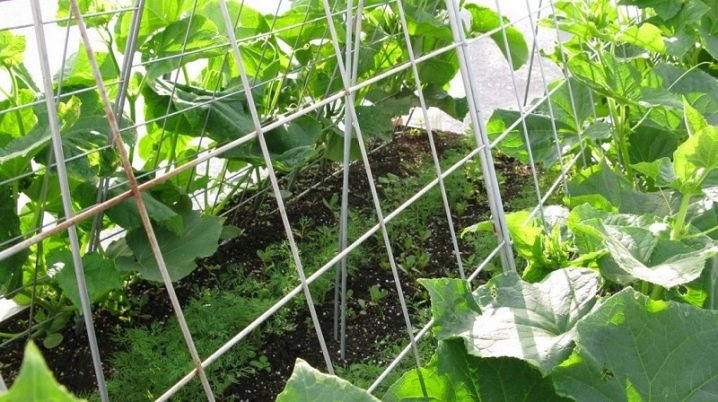
Possible positioning errors
It is worth considering the main mistakes of gardeners in order to prevent them.
- Novice summer residents often arrange cucumber plantings too tightly, for reasons of space saving. You cannot do this - the thickening of the planting leads to the fact that the plants do not have enough resources and they cease to bear fruit. Not to mention, the lack of distance between cucumber bushes creates a favorable environment for fungal diseases and parasites.
- Slightly better and falling into the other extreme - planting cucumbers too far apart. In this case, the plant, accustomed to the humid subtropical twilight, finds itself in the hot open sun. The optimal planting density is 3 bushes per 1.5 sq. m.
- Do not form bushes. In order for the plants to bear fruit better and not get sick, it is imperative to form stems as soon as 8-10 leaves appear on them. To do this, first, in the first four sinuses, all excess lateral shoots and female flowers are removed. Then, in the next four nodes, the lateral processes are pinched after one leaf, and then - in the next two or three nodes after two, leaving three leaves in the upper part of the stem. Further, as soon as the stems reach a length of 30 cm, they need to be tied up (unless the cucumbers are grown using the spreading method) on supports. The whiskers are removed, as they interfere with the formation of the plant, leaving only those with which the cucumber lashes cling to the twine.
- Failure to comply with the principles of agrarian neighborhood... If you grow cucumbers in the same greenhouse with nightshade crops, you can lose the harvest of both. Cucumbers do not like drafts, they need abundant watering and high humidity, while nightshades, on the contrary, need to be regularly ventilated and watered less often. Also, cucumbers do not tolerate the neighborhood with potatoes and aromatic herbs - sage, basil, cilantro, etc.
- Sowing seeds for seedlings too early (February-March). In this case, by the time of transplanting into the ground, the seedlings will be too long and thin, the adaptation process will be delayed. If a mistake is still made, this mistake can be corrected by carefully twisting the stem into a loop, deepening it to the cotyledon leaves and sprinkling it with earth. If the seedlings have already begun to bloom, it is necessary to remove the buds so that the plant does not waste precious energy on unnecessary fruiting, and to prevent the development of diseases.
- Incorrect placement of plantings in the greenhouse... The distance between the cucumbers and the edge of the garden bed should be at least 25-30 cm. If you plant cucumbers too tightly against the wall of the greenhouse or greenhouse, they will wither away from lack of heat during frosts.
- Lack of support... To enhance vertical growth, cucumbers must be tied up. This will facilitate maintenance and harvesting, as well as minimize contact of the stems with the ground and help prevent rot. The garter is made when the plant reaches a length of 30 cm.
- Incorrect location and construction of the greenhouse itself. A greenhouse or greenhouse should be installed on the south or southeast side of the site. For better heat preservation, the beds in the greenhouse are formed at a slight angle, and the back blank wall of the room is painted white or sheathed with foil - reflecting from the wall, the sun's rays will additionally heat the bushes in the back. It is necessary to have a ventilation window, but at the same time there should be no draft in the greenhouse.
- Do not disinfect the greenhouse. Timely sanitation of the greenhouse will help to avoid phyto-diseases and preserve the harvest. Disinfection is performed by fumigating the room with sulfur or spraying all surfaces with a solution of lime or copper sulfate at the rate of 400 g of lime or 75 g of sulfate per bucket of water. The soil is spilled with a warm 3% solution of potassium permanganate. Then carefully treat the windows with a solution of detergent. It is imperative to destroy moss, fungus and lichens.
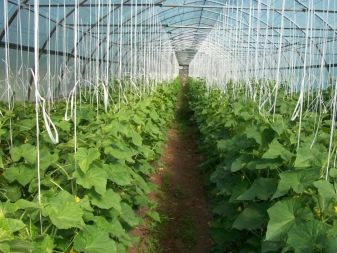
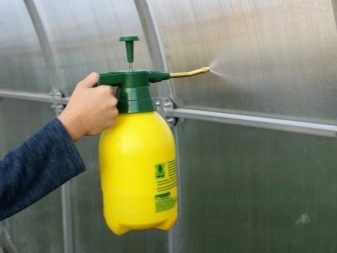













The comment was sent successfully.